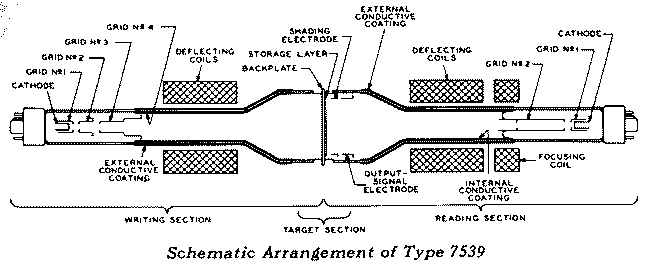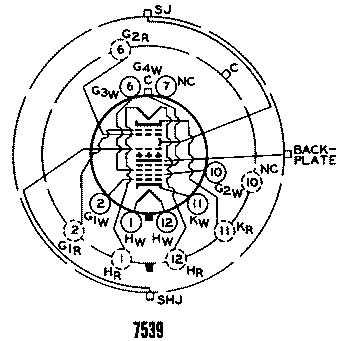RCA 7539




This Graphecon is from Thomson-CSF. The type number is TMA406H. Anyone out there who know what it was used for and perhaps have some data about it?
******************
John Kaesehagen in Australia have the following interesting facts to tell us:
I used to work on a CSF radar using a tube like that to produce the 'bright displays'. The 'normal' viewing screens for the radar information were long persistence phosphor Plan Position Indicators. The beam traced from the centre to the edge during the time between each transmitter pulse. That line rotated around the full circle following the antenna direction. These screens were viewed in a dimly lit room. When radar display was needed in the 'tower' where the operators needed to be able to see outside too, it was more suitable to use a television display of the picture seen on the PPI. This was achieved by using a tube like the Graphecon as a 'scan converter'. The PPI style picture was drawn on one side of the central screen and read off the other side by a TV raster scan. I just dug out my old training notes "CSF Radar Bright Display", only to find that the several hundred page 'book' contains everything but the bright display info. That will be because in Adelaide, unlike the eastern states, we did not have the TV displays in general use. In fact the only scan converter was a part of the radar simulator which was an incredible electromechanical and valve analogue computer. It was obsolete when sent to Adelaide in the late 1970s. I was lucky to be given the job of refurbishing it. The Air Traffic Control trainers said that I got it working better than when they had used it many years ago in Victoria when it was new. I bought some sections of it when it was eventually scrapped. I have the schematics and manuals for the Redifon 'computer' section but I don't think I kept the info on the scan converter.